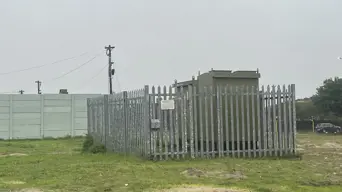Drug addiction, gangsterism blamed for Belhar community not reporting vandalism & theft of Eskom infrastructure
Morgan Van De Rede
12 July 2025 | 11:12Criminals in the area have been stealing parts from Eskom substations in the area, leaving residents without electricity.

An Eskom substation in Belhar, Cape Town. Picture: Ntuthuzelo Nene/EWN
CAPE TOWN - Residents in the Belhar area have been plagued by a series of vandalism cases since May.
Criminals in the area have been stealing parts from Eskom substations in the area, leaving residents without electricity.
Eskom officials have been fixing the broken substations, but the vandalism has persisted, leading to the electricity utility choosing to deprioritise certain areas in Belhar.
ALSO READ:
• Power restored to parts of Belhar left in dark for more than a month
• Eskom calls on WC residents to unite against infrastructure theft & vandalism
• WC criminals targeting electricity substations leave Belhar residents in the dark
• Blackout in Belhar raises concerns over copper cable theft
Eskom officials have urged community members to report any cases of vandalism.
Belhar resident, Natalie Jacobs, said that drug addiction and gangsterism stopped communities from reporting crimes.
"Such a lot of family members whose children are involved in the drug addiction that they are too afraid to speak up because we don’t know who is in the groups, because they don’t want to do anything to raise their voice and to bring anything to the party."
Jacobs said that the lack of support from the police was an added challenge in the area.
"They are supposed to patrol hand-in-hand with the community police forum so if they go out, they need to have a van present but because of the limited resources we have at our SAPS station, they won’t be able to patrol with us, so there isn’t police visibility at all."
Western Cape SAPS responded to these concerns, saying that the community could be assured that all available resources were utilised effectively and that the allocation of resources was based on identified needs and crime trends.
Get the whole picture 💡
Take a look at the topic timeline for all related articles.












